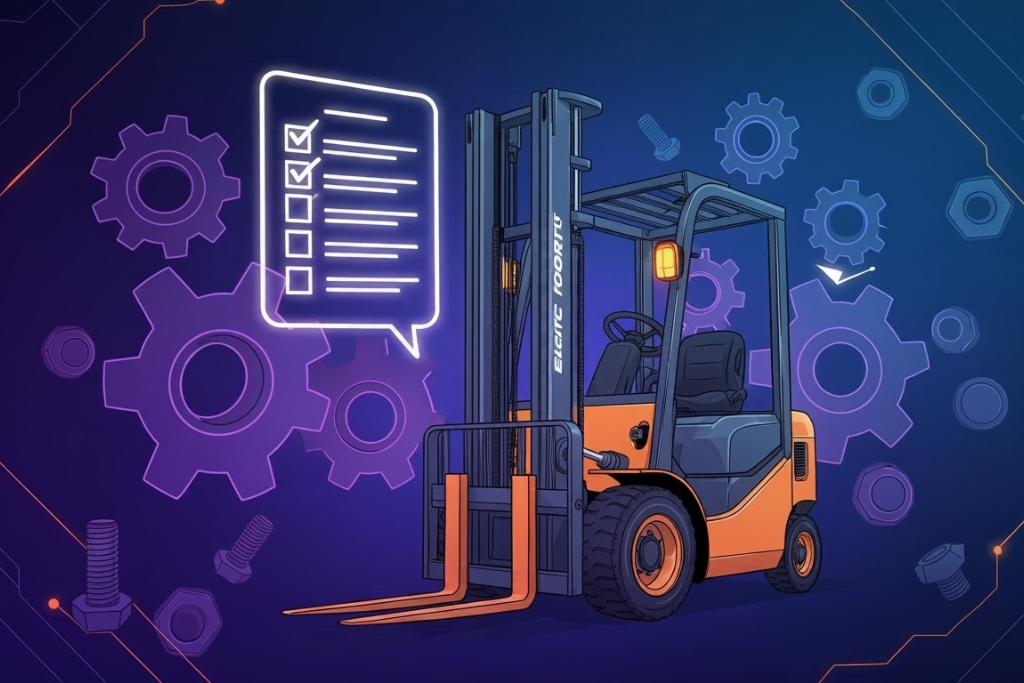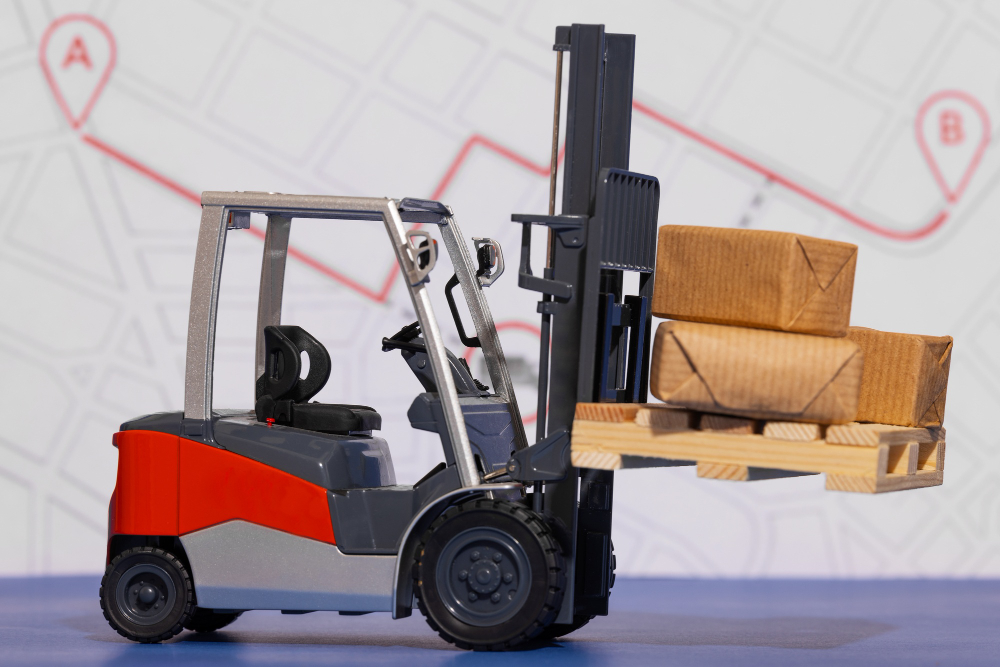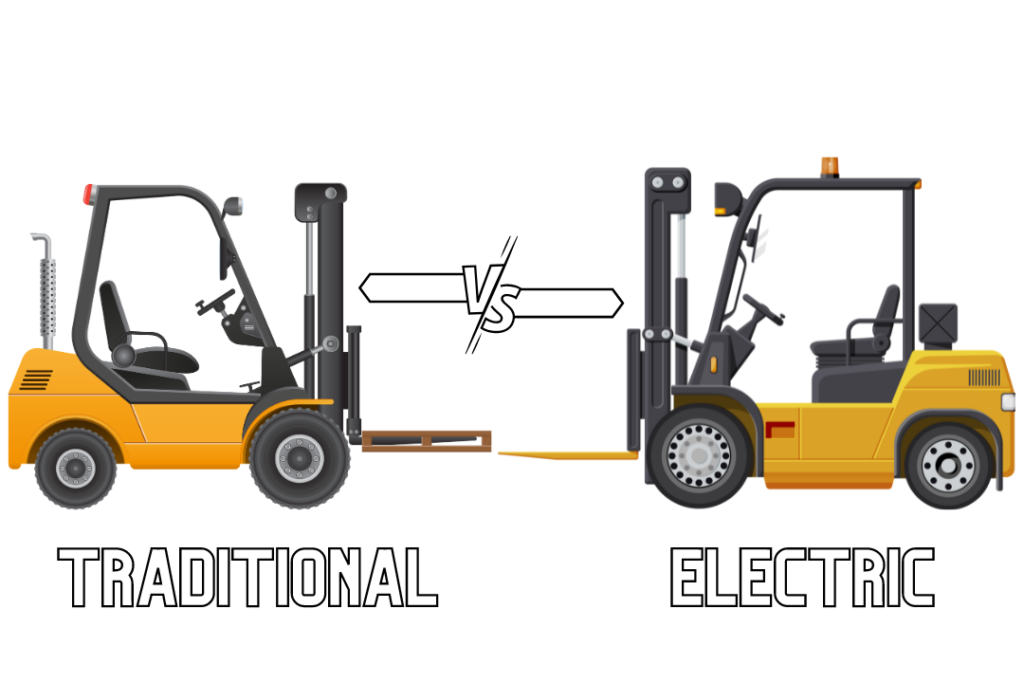Electric forklifts have become very popular in industries because of several advantages over the regular internal combustion engine (ICE) forklifts.
One of the major advantages is the environmental impact. Electric forklifts do not release emissions when in operation, making them perfect for indoor applications where air quality is of utmost importance.
This feature not only allows for compliance with strict environmental regulations but also creates a better working environment for employees.
Ice forklifts, on the other hand, produce harmful fumes that can be trapped inside the space, therefore, causing health hazards to the workers so that there is a need for additional ventilation systems.
In addition, electric forklifts instead of the gas or diesel forklifts, are generally quieter thus saving the external community from the noise and confusion that is common in the majority of workplaces.
The decrease in noise pollution is an added advantage to the workers and can result in a better working environment, especially in such settings as warehouses and distribution centers where workers are always in contact with machinery.
The fact that these machines now operate with less sound also gives room for more working hours without disturbing other operations or residential areas. In general, electric forklifts have lower maintenance costs over their lifespan.
Their parts are fewer and there is no oil change necessary, thus leading to a reduction in maintenance and time costs.
Key Takeaways
- Electric forklifts have the potential to bring down your operating expenses and cut your emissions radically compared to the traditional forklifts
- Think about a series of factors, like the load it can carry, the type of battery it uses, and how maneuverable it is, while considering the right electric.
- Adopting proper charging and maintaining procedures is important if you want to extend the life and battery efficiency of your electric forklift truck
- Can you help night operators be safe and efficient? The answer is positive, and training them on the correct way of operation and maintenance can be an effective way to reach a win-win situation
- If the design and equipment are optimized in the storage facility this would lead to increased efficiency of electric forklift driving
Electric Forklifts: A Comprehensive Guide to Purchasing
The electric forklift that best fits a company’s needs is determined by an accurate evaluation of different factors with the aim of meeting the company’s requirements.
The capacity of the load is the most important aspect to be considered when selecting an electric forklift. The electric forklift industry offers a range of capacities from 3,000 to 15,000 lbs.
The maximum weight they need to lift must be determined and the forklift’s power must be chosen accordingly by the companies. For instance, a facility dealing with heavy machinery is best suited for a high-capacity electric forklift, while a retail distribution centre might prefer a smaller model. Another very important thing to consider is the terrain type of the spot where the forklift is going to be used
Different electric forklifts are made for very specific applications and for different environments; and so on and so forth. An example can be a cushion-tire forklift which is a perfect fit for smooth floors within the indoors, while a pneumatic-tire forklift is fit for the outdoors, and can also navigate through bumpy areas.
Equally important is taking into account the stacking height as well as the number of lifts in the system when choosing a forklift truck.
A model with a high mast can be used in warehouses that have tall shelves to ensure that operators can get goods efficiently and safely store goods over a very high distance.
Proper Charging and Maintenance Practices Implementation
For the proper usage and the long service life of electric forklifts, it is necessary to implement the best charging and maintenance practices. Charging procedures must be introduced to guarantee that batteries are appropriately as well as effectively charged.
The use of smart chargers that can automatically adapt the charging process according to the battery condition is recommended and such a technology greatly helps in the battery life and as a result, the battery performs at its best.
Additionally, workers should be trained to regularly check the status of the battery and the depth of discharges to be avoided to prolong battery life and optimize performance.
Regular maintenance checks are just as important in maintaining electric forklift trucks in optimal working order. This includes regular checks of major components such as brakes, tires, and electrical systems.
A maintenance schedule that complies with the instructions of the manufacturer can avert untimely breakdowns and expensive servicing. Also, maintain detailed records of maintenance activities that can help in identifying patterns of repeated mistakes, and thus, you can take necessary steps against them, before they cause a major problem.
Training Operators to Unleash the Full Potential
One of the most important factors that influence a higher level of efficiency for electric forklifts is the expertise of the people who operate them. Specifically, the operator must be well-versed in electric forklift functions and safety precautions by participating in comprehensive training programs.
Besides the essential operational skills, such training should only focus on the advanced aspects like the ones required for load handling, maneuvering in a confined space, and distinguishing electric models from the traditional ones.
Besides, continuous training and retraining are very important in maintaining high operational proficiency and safety levels. New features entering electric forklift technology categories frequently, therefore, the operators must be aware of and be in full compliance with the best practices and safety regulations.
Furthermore, a mentorship program where the experienced operators can act as mentors to the new ones is vital in terms of a safety and efficient working environment.
Positive Warehouse Arrangements for Electric Forklifts
Warehouse layout has an extremely significant impact on the efficient performance of electric forklifts. Well-designed layout can be represented by the proximity of the storage areas, the loading docks, and the workstations that are strategically placed minimizing travel time and thus maximizing productivity.
In the example of wide aisles, these would be ideal to make the electric forklift free from the traffic of the people starting from the area immediately around it thus no one imp cancct its work.
Extraover, by putting the fast-moving items within easy access to the loading areas you can speed up the picking process and also reduce the movements to a minimum.
Likewise the plan should incorporate the installation of charging stations within the layout. The charging points should indeed be well-situated and not be obstructed by people initiating the charging processes thus the traffic in the process will be minimal with maximum charging capacity.
Furthermore, by guarantying that charging stations include the right type of signals and security measures, it can be achieved that such a stations is not only governed properly and safely at the same time.
Utilizing Technology to Enhance Electric Forklift Efficiency
Refrain: The emergence of technology in electric forklift operations has altered the course of business in terms of their material handling activities.
Precisely, new telematics systems have launched to track the situation of forklifts in real time and collect information on key parameters of the vehicle, such as the most frequent application, the state of the battery or the need for servicing. Based on the data gathered, companies can do logistics reengineering to avoid unproductive stages and hence lower their running costs.
However, robots have also come into play in this sector in the form of autonomous electric forklifts that have become very popular in the storage space and distribution sectors.
These self-driving machines can follow given paths, perform monotonous tasks, and even interact with other machines within a factory. By allowing these robots to replace human labor, companies can produce more goods and ultimately, human labor can concentrate on oppressing jobs that require thinking and problem-solving skills.
Monitoring and Analyzing Performance Data
One of the most critical evaluations in material handling is determining the lift truck’s efficiency. Identifying and continuously reviewing key performance indicators like the number of cycles executed each hour, the amount of energy consumed during the shift, and the frequency of maintenance will give a clearer picture of the current state of affairs.
Managers will be able to make data-based decisions, regardless of whether there are any patterns to follow or some outliers, which may indicate any setbacks or potential issues.
Here, a typical case would be an excessive forklift’s consumption of the power over time. First of all, this may merely be a shout for transport machinery to be serviced, or it may mean that these models are just pushed beyond their capabilities.
This well can be more than the job of a few operators with significant skills in doing the hours, which means that new operators need to be trained. To reach reliability of the information, the organization is adopting operational efficiency as well as encouraging improvement.
Total Green Transformation through Electric Forklifts
One such example of reliable and environmentally responsible lift trucks is that, apart from being energy-efficient, they do not cause any air pollution.
However, companies must strive for sustainability and environmental health. For instance, the use of solar-powered charging stations is a clean and less costly way of charging the batteries and, in the process, reducing the dependence on the grid that will be powered by renewable energy.
Another example can be given in the event that companies are on a battery recycling trip in order to get the batteries reprocessed and turned into new ones after they are thrown away.
In the case of partnering with e-waste recycling companies, not only do businesses reduce their environmental impact but also they get the chance to be part of corporate social responsibility.
Besides, the promotion of energy-saving practices in the warehouse to achieve a green operation is possible if employees at large are directed, or else, informed about the energy conservation practices.
Expanding on these environmentally friendly practices while using electric forklifts, in addition, will improve the companies’ operational efficiency and also establish them as the key influencers of environmental responsibility in the industries they belong to.



